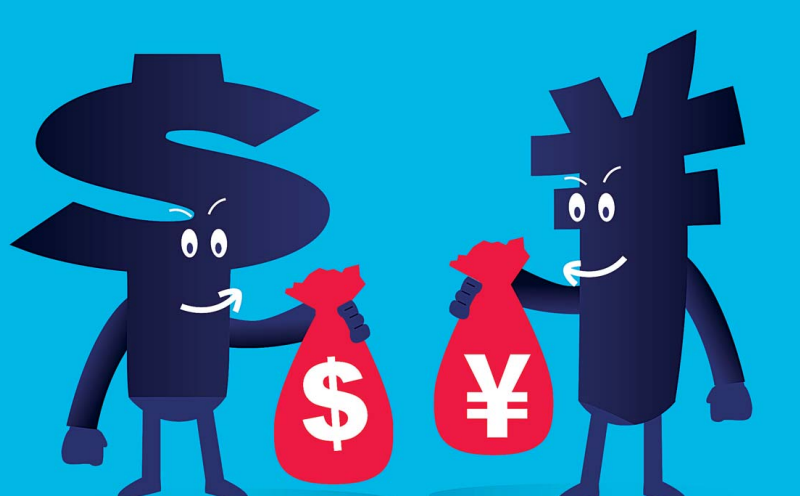Imagine a situation where you identify a business with great returns which is calling for investments. You want to invest in the business but do not have enough saved up to invest. But you do know someone who lends money at low interest rate. You decide to borrow from the lender and invest in the business. The difference between the interest you pay on the loan and the returns you earn from the business will be your profit. This is what carry trade is in simple terms. Carry trade involves an investor borrowing funds at low interest rates to invest in an asset that offers higher returns. Although carry trades can be seen in all kinds of markets, they are primarily done in foreign exchange markets where the investor borrows from a currency with low interest rate and uses it in the purchase of currencies that provide better yields.
The Japanese yen has long been the favoured currency for financing carry trades due to the ultra-low interest rates set by the Bank of Japan (BoJ). This situation was complemented by high interest rates in other countries, allowing them to capitalise on the difference. The wider the difference between borrowing interest rate and the returns on investment, the higher the profit.
So, things started to shake up in the international market when BoJ increased its interest rate from -0.1%, where it had been since January 2016, to 0.1% in March 2024, and then further to 0.25% in July. A higher interest rate resulted in the appreciation of yen, making it more expensive for the borrowers to repay their loans to BoJ, forcing them to quickly exit their carry trade position. And to fan the flame, the speculation that Federal Reserve planned to cut interest rate that had already brought in distress in the market was confirmed by the Fed. In September 2024, the Fed reduced the interest rate from 5.5% to 5%, and this downward trend continued until December, with the current interest rate now standing at 4.5%. With the profits from carry trade dwindling, investing in USD denominated assets grew less attractive causing another rush by the traders to rid of their yen carry trades. This frantic pay back of yen loans made the currency stronger. This can kick-start a never-ending cycle where yen loan payback becomes costlier, further diminishing the worth of yen carry trades resulting in more and more funds being pulled out from investments across the globe.
The yen carry trade has far-reaching significance and impacts, which become particularly evident when it begins to unwind, as seen during the quant meltdown in 2007. In the period leading up to the 2007-08 financial crisis, hedge funds and their intermediaries had utilised borrowed funds from Japan to acquire mortgage assets and related securities. When the credit bubble burst and deleveraging accelerated, these entities were forced to liquidate their positions by selling off mortgage assets and repaying their Japanese lenders. Consequently, the early stages of the crisis were marked by a simultaneous decline in asset prices and the US dollar.
Although the difference in Japanese and US interest rates is narrowing, and Yen is strengthening, the expectation of a weakening US Dollar has also begun to lift. The latest core Consumer Price Index (CPI) data unveiled a more modest-than-expected MoM increase of 0.2%, after four consecutive months of 0.3% MoM increases, sparking hopes of easing US core inflation. Although core CPI is still above Fed’s target of 2%, the sign of disinflation is a source of encouragement for the market, as the investors were worried about the inflation being stuck above the target following a consistent drop in prices throughout 2023 and much of last year. Core inflation is a key focus for investors and Federal Reserve members as it excludes food and energy which are volatile. This exclusion allows for a clearer insight into the inflation trends of an economy.
During Donald Trump’s first tenure as the US President, we saw the dollar struggling, but it looks like the dollar might have a better run this time around. The market, which favoured Trump’s victory, was bullish on the dollar, and following his win, the US dollar has appreciated compared to pre-election levels. What props up this appreciation is a corresponding weakness in global currencies considered at risk from Trump’s economic policies. The market anticipates high tariffs and increased government spending as pledged by the Trump administration, both of which could drive inflation higher leading to fewer interest rate cuts. Tariffs mean less imports by the US resulting in a stronger dollar as fewer dollars will be circulating globally. Additionally, tariffs can also make the US appear more attractive to FDIs, with companies relocating production to the US due to export restrictions. The country is also seeing more capital inflow resulting in a stock market boom and strengthening dollar.

BoJ further increased its interest rate to 0.5% this month, marking the highest level since 2008, aligning with market expectations. This marks the third-interest rate hike since the central bank ended its negative interest rate policy in March 2024. The board also signalled the possibility of further rate increases if economic and price data meet their forecasts. Despite this, the incentive to unwind yen carry trades remains low due to the yen’s weakness against the dollar, unlike last year when the U.S.-Japan interest rate gap was narrowing, and the yen was stronger. Another significant reason for the massive unwinding of yen carry trades last year was the heightened fear of an economic recession, spurred by the announcement of deteriorating U.S. employment indicators right after the BoJ’s interest rate hike. When the dollar strengthens, other currencies essentially weaken. Therefore, if the US dollar builds enough might to counteract the increase in Japanese interest rate, then the looming threat of massive Yen carry trade unravelling can be put to rest.
Impact on India markets During the initial period, the Yen depreciated by around 16% against the Indian Rupee, leading to significant inflows into Indian equity markets, particularly in midcap funds, which saw 10% of the total Yen inflows. This period also witnessed a broad expansion in domestic mutual fund investments. However, when the Yen carry trade unwound two years later, starting in January 2018, yen denominated investments had nearly tripled from $2.7 billion to $10.2 billion. The breadth of the market was adversely affected, although domestic mutual fund inflows remained positive, albeit at a slower pace.







